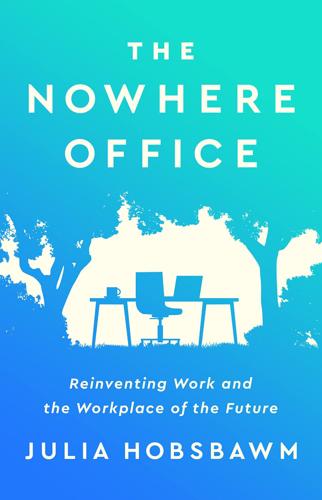
The Nowhere Office: Reinventing Work and the Workplace of the Future
by
Julia Hobsbawm
Published 11 Apr 2022
The Rebirth of Distance As the Nowhere Office era began in 2020 a new networking era dawned. During lockdowns WhatsApp group usage soared by 40 per cent as isolated professionals realised that for all of its faults the office provided some kind of in-built network structure they had to remake alone.6 The management writer Frances Cairncross famously described the internet era as ‘the death of distance’7 but the Nowhere Office sees its rebirth. It is widely acknowledged among recruiters that the pandemic has widened the talent pool substantially.8 As I wrote in Chapter 1, everyone is more #GenMobile than they were before. Yet people crave close connection and they find workarounds when they cannot do so in person.
…
Mansoor Iqbal, ‘LinkedIn Usage and Revenue Statistics (2021)’, Business of Apps, 5 July 2021, https://www.businessofapps.com/data/linkedin-statistics/ 6. Sarah Perez, ‘Report: WhatsApp Has Seen a 40% Increase in Usage Due to Covid-19 Pandemic’, TechCrunch, 26 March 2020, https://techcrunch.com/2020/03/26/report-whatsapp-has-seen-a-40-increase-in-usage-due-to-covid-19-pandemic/ 7. Frances Cairncross, The Death of Distance: How the Communications Revolution is Changing Our Lives (Harvard Business Review Press, 2001) 8. Lin Grensing-Pophal, ‘Taking Advantage of a Broader Talent Pool’, Society for Human Resource Management, 3 February 2021, https://www.shrm.org/resourcesandtools/hr-topics/talent-acquisition/pages/taking-advantage-of-a-broader-talent-pool.aspx 9.
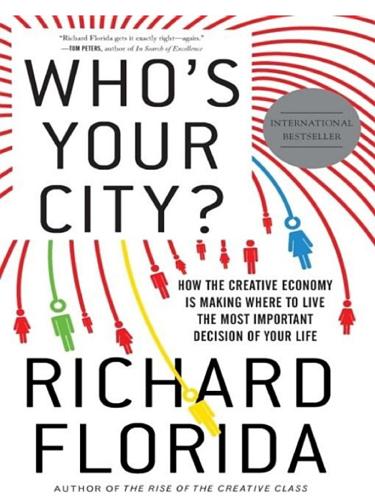
Who's Your City?: How the Creative Economy Is Making Where to Live the Most Important Decision of Your Life
by
Richard Florida
Published 28 Jun 2009
From the invention of the telegraph and the telephone, the automobile and the airplane, to the rise of the personal computer and the Internet, many have argued that technological progress has eroded the economic significance of physical location. The same prophecies persist today. In 1995 The Economist proclaimed the death of distance. “Thanks to technology and competition in telecoms,” journalist Frances Cairncross predicted, “distance will soon be no object.” Four years later the same magazine proudly announced the conquest of location. “The wireless revolution is ending the dictatorship of place in a more profound way.”2 The new communications technologies were proving to be the great levelers in an increasingly globalized world.
…
These data are updated annually and are available on the census website. 3 Veolia Observatory of Urban Lifestyles, Life in the City, 2008. 4 Charles Tiebout, “A Pure Theory of Local Expenditures,” Journal of Political Economy 64, 5, 1956, pp. 416-424. 5 In particular, the work of Jane Jacobs: The Death and Life of Great American Cities, Vintage, 1992 (1st ed., 1961); The Economy of Cities, Vintage, 1970; and Cities and the Wealth of Nations, Vintage, 1985. Much of my own research on this subject is summarized in The Rise of the Creative Class, Basic Books, 2002. Chapter 2 1 Thomas Friedman, The World Is Flat, Farrar, Straus & Giroux, 2005. 2 The original article is Frances Cairncross, “The Death of Distance,” The Economist, September 30, 1995. She later published an influential book by the same title, The Death of Distance, Harvard Business School Press, 2001. Also, “Conquest of Location,” The Economist, October 7, 1999. 3 Edward E. Leamer, “A Flat World, A Level Playing Field, a Small World After All or None of the Above?

Superbloom: How Technologies of Connection Tear Us Apart
by
Nicholas Carr
Published 28 Jan 2025
,” published in 1989, the same year Tim Berners-Lee invented the World Wide Web, Francis Fukuyama heralded the arrival of “the end point of mankind’s ideological evolution and the universalization of Western liberal democracy as the final form of human government.”2 The web seemed the perfect medium for the dawning age of universal democracy. The technology’s effect, wrote the prominent Economist editor Frances Cairncross in her 1997 book, The Death of Distance, “will be to increase understanding, foster tolerance, and ultimately promote worldwide peace.”3 Her words echoed, almost note for note, the utopian rhetoric that had accompanied new communication systems at the century’s start. The democratization story runs as a stirring refrain through Stevens’s opinion.
…
Sabine Trepte and Leonard Reinecke (Berlin: Springer, 2011), 33–45. 22.Ian Bogost, “The Age of Social Media Is Over,” Atlantic, November 10, 2022. Chapter 6: The Democratization Fallacy 1.Reno v. ACLU, 521 U.S. 844 (1997). 2.Francis Fukuyama, “The End of History?,” National Interest, Summer 1989. 3.Frances Cairncross, The Death of Distance (Boston: Harvard Business School Press, 1997), xvi. 4.Douglas Rushkoff, Open Source Democracy: How Online Communication Is Changing Offline Politics (London: Demos, 2003). 5.Jeff Jarvis, “Argue with Me,” BuzzMachine, November 11, 2004. 6.Joe Trippi, The Revolution Will Not Be Televised: Democracy, the Internet, and the Overthrow of Everything (New York: Regan Books, 2004), 235. 7.Jay Rosen, “The People Formerly Known as the Audience,” Huffington Post, June 30, 2006. 8.Yochai Benkler, The Wealth of Networks: How Social Production Transforms Markets and Freedom (New Haven, CT: Yale University Press, 2006).

As the Future Catches You: How Genomics & Other Forces Are Changing Your Work, Health & Wealth
by
Juan Enriquez
Published 15 Feb 2001
Lawrence University in Canton, New York. (http://it.stlawu.edu/~dmelvill/mesomath/index.html). If you want to learn to count in cuneiform go tohttp://it.stlawu.edu/~dmelvill/mesomath/Numbers.html. 3. Nicolas Negroponte wrote a wonderful book on this: Being Digital (New York: Knopf, 1995). A more recent, more technical book is Frances Cairncross’ The Death of Distance: How the Communications Revolution Will Change Our Lives (Boston: Harvard Business School Press, 1997); or see Neal Stephenson’s In the Beginning … Was the Command Line (New York: Avon, 1999). 4. Various organizations monitor these trends, among them Gartner and Telegeography.
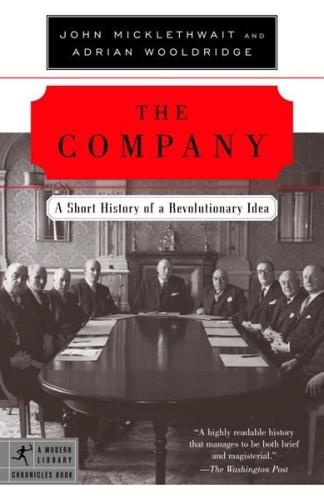
Company: A Short History of a Revolutionary Idea
by
John Micklethwait
and
Adrian Wooldridge
Published 4 Mar 2003
The classic account of this is AnnaLee Saxenian, Regional Advantage: Culture and Competition in Silicon Valley and Route 128 (Cambridge, Mass.: Harvard University Press, 1994). 21. Joint Venture Silicon Valley, 2002 Index, see: http://www.jointventure.org/resources/2002Index/index.html. 22. Frances Cairncross, The Company of the Future (Boston: Harvard Business School Press, 2002), 4. 23. Tedlow, Giants of Enterprise, 385. 24. John Byrne, Chainsaw: The Notorious Career of Al Dunlap in the Era of Profit-at-Any-Price (New York: HarperBusiness, 1999), 27. 25. Nicholas Lemann, “Letter from Philadelphia,” New Yorker, June 5, 2000. 26.
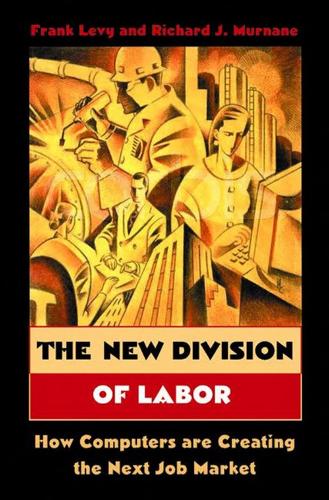
The New Division of Labor: How Computers Are Creating the Next Job Market
by
Frank Levy
and
Richard J. Murnane
Published 11 Apr 2004
Found at the following website: http://www.internet.com/corporate/releases/03.05.19-newjupresearch.html. CHAPTER 3. How Computers Change Work and Pay 1. Kark Sabbagh, 21st-Century Jet: The Making and Marketing of the Boeing 777 (New York: Scribner, 1996), 58–59. 2. See http://www.boeing.com/commercial/777family/compute/index.html. 3. See Frances Cairncross, The Death of Distance: How the Communications Revolution Will Change Our Lives (Cambridge: Harvard Business School Press, 1997). 4. A larger fraction of the entire population was working in the year 2000 than in 1969, but the unemployment rate is defined as: (number of people looking for work) (number of people looking for work + number of people working) , and this statistic could be equal in the two years because the number of people working and the number of people looking for work had both risen. 5.
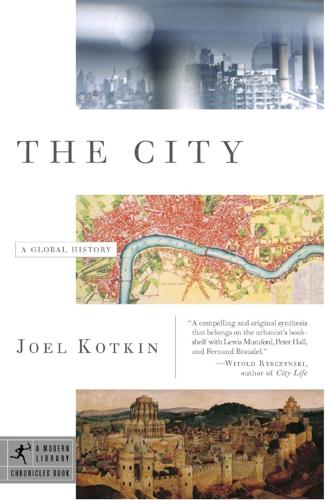
The City: A Global History
by
Joel Kotkin
Published 1 Jan 2005
McNeill, The Pursuit of Power, 151; Rhoads Murphey, “The City as a Centre of Change: Western Europe and China,” in The City in the Third World, ed. D. J. Dwyer (New York: Barnes and Noble Books, 1974), 65. 33. Hale, op. cit., 143. 34. Israel, op. cit., 1011; Braudel, Perspective of the World, 365; Hall, op. cit., 116. 35. Meyers, op. cit., 161–63, 225, 232–33. 36. Hamish McRae and Frances Cairncross, Capital City: London as a Financial Centre (London: Eyre Methuen, 1973), 9. 37. Emrys Jones, Metropolis, (Oxford, Eng.: Oxford University Press, 1990), 93; Zucker, op. cit., 196–98. CHAPTER TWELVE: THE ANGLO-AMERICAN URBAN REVOLUTION 1. Hale, op. cit., 355; Braudel, Perspective of the World, 548. 2.
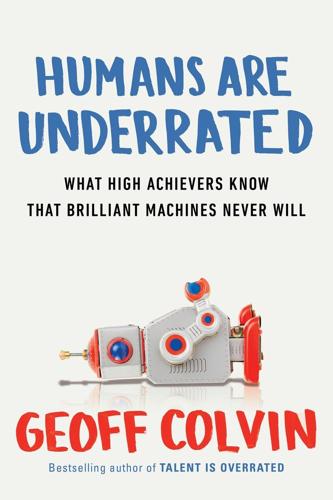
Humans Are Underrated: What High Achievers Know That Brilliant Machines Never Will
by
Geoff Colvin
Published 3 Aug 2015
Joshua Wolf Shenk, Powers of Two: Finding the Essence of Innovation in Creative Pairs (Houghton Mifflin Harcourt, 2014). “What I saw . . . in creative pairs was trust . . .” Ibid., p. 33. Even Sartre and de Beauvoir . . . Ibid., p. 119. An acclaimed book at the dawn of the Internet age . . . Frances Cairncross, The Death of Distance: How the Communications Revolution Is Changing Our Lives (Texere Publishing, 1997). It isn’t just the simple explanation that more people would produce more ideas . . . Luís M. A. Bettencourt, Geoffrey B. West, “Bigger Cities Do More with Less,” Creativity, published by Scientific American Mind, 2013.
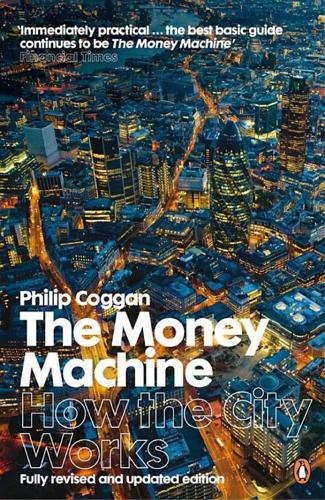
The Money Machine: How the City Works
by
Philip Coggan
Published 1 Jul 2009
Norton, 1994) Nigel Lawson, The View from No. 11 : Memoirs of a Tory Radical (Corgi Books, 1993) Harold Lever and Christopher Huhne, Debt and Danger (Penguin, 1985) Peter Lynch (with John Rothschild), Beating the Street (Simon & Schuster, 1993) Robert P. McDonald, International Syndicated Loans (Euromoney, 1982) Charles Mackay, Extraordinary Popular Delusions and the Madness of Crowds (John Wiley, 1996) Hamish McRae and Frances Cairncross, Capital City (Methuen, 1985) J. Maratko and D. Stratford, Key Developments in Personal Finance (Basil Blackwell, 1985) Martin Mayer, Markets (Simon & Schuster, 1989) Alison Mitchell, The New Penguin Guide to Personal Finance, 1993/4 edn (Penguin, 1993) Alex Murray, 101 Ways of Investing and Saving Money, 3rd edn (Telegraph Publications, 1985) R.

Night Trains: The Rise and Fall of the Sleeper
by
Andrew Martin
Published 9 Feb 2017
ACKNOWLEDGEMENTS For supplying historical information and insight, I would like to thank, in no particular order: the International Railway Preservation Society, especially Brendan Martin, Christopher Elliott and Phil Marshall; the SNCF Society; Colin Rolle of the Railway Employees & Public Transport Association; Chris Jackson, editor of Railway Gazette International; John Scott-Morgan; Julian Pepinster; Dame Frances Cairncross; Tim Johnson of the Aviation Environment Federation; John Stewart of HACAN; Brian Riddle of the National Aerospace Library; Nigel Harris, editor of Rail magazine; Bob Gwynne at the National Railway Museum, York; the staff of the National Railway Museum, Shildon; Lars Igeland of Friends of the Earth, Sweden; Dr Werner Reh, of Friends of the Earth, Germany; Susie Cox, of the P&O Heritage Collection.

Age of the City: Why Our Future Will Be Won or Lost Together
by
Ian Goldin
and
Tom Lee-Devlin
Published 21 Jun 2023
This is a book that has been many years in the making, with its origin in the great paradox of modern globalization: that declining friction in the movement of people, goods and information has made where you live more important than ever. Appreciation of the complexity of globalization has come a long way since the early 2000s, when Thomas Friedman’s The World is Flat and Frances Cairncross’s The Death of Distance captured the public’s imagination. With the power of hindsight, we now know that place is of utmost importance in a globalized world. That world is being shaken by a populist politics, often built on anger against cosmopolitan urban elites in major global cities. This has been given expression through Brexit in Britain, and in support for anti-establishment politicians in the US, France, Italy, Sweden and other countries.
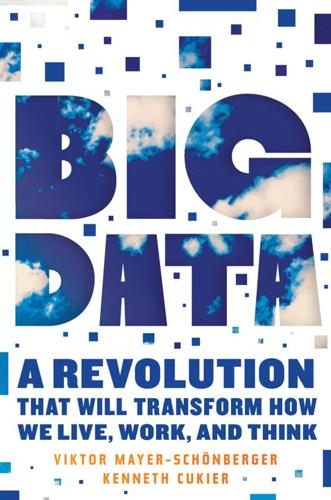
Big Data: A Revolution That Will Transform How We Live, Work, and Think
by
Viktor Mayer-Schonberger
and
Kenneth Cukier
Published 5 Mar 2013
The Salzburg Global Seminar in Austria offered the perfect combination of idyllic repose and intellectual inquisition that helped me write and think. An Aspen Institute roundtable in July 2011 sparked many ideas, for which I thank the participants and the organizer, Charlie Firestone. Also, my appreciation goes to Teri Elniski for her tremendous support. Frances Cairncross, the Rector of Exeter College, Oxford, offered a tranquil place to stay and great encouragement. It is humbling to fix one’s mind upon questions of technology and society that build on those she raised a decade and a half earlier in The Death of Distance, a work that inspired me as a young journalist.

The Hidden Half: How the World Conceals Its Secrets
by
Michael Blastland
Published 3 Apr 2019
Blastland provides an explanation of the need for humility in the face of the inevitable limits to knowledge.’ Diane Coyle – Bennett Professor of Public Policy, Cambridge University ‘Fascinating... As John Wooden said, it’s what you learn after you know it all that counts.’ Andrew Gelman – author of Red State, Blue State, Rich State, Poor State ‘Beautifully written and often very funny.’ Dame Frances Cairncross – Chair, Executive Committee of the Institute for Fiscal Studies ‘Packed with fascinating examples of our shaky understanding of ourselves and the world.’ Bobby Duffy – Director, the Policy Institute at King’s College London ‘A terrific book! I read it quite literally in one sitting.’ Nick Chater – Professor of Behavioural Science, Warwick Business School, and author of The Mind is Flat About the Author Michael Blastland is a writer and broadcaster.

Restarting the Future: How to Fix the Intangible Economy
by
Jonathan Haskel
and
Stian Westlake
Published 4 Apr 2022
In his book The New Geography of Jobs, Enrico Moretti reports disengagement with the political process, but shortly after his book’s publication, a wave of political entrepreneurs around the world provided disengaged voters with something that appealed to them: populism, often combined with promises of bringing back a social and economic world that had been lost.15 We might hope that technology will rescue us from this double bind of rich-but-strangled cities and decaying, disaffected towns and that the COVID-19 home-working revolution might accelerate this change. In 1968, computer scientist Douglas Engelbart demonstrated videoconferencing and simultaneous collaborative document editing.16 Three decades later, the journalist Frances Cairncross coined the term “the death of distance” to describe a world in which these technologies would free the economy from the vulgar constraints of place.17 At the beginning of 2020, place remained at least as important as ever: to the extent that people invoked the death of distance, they did so as an example of the naive optimism of yesteryear, alongside flying cars, the paperless office, and the end of history.
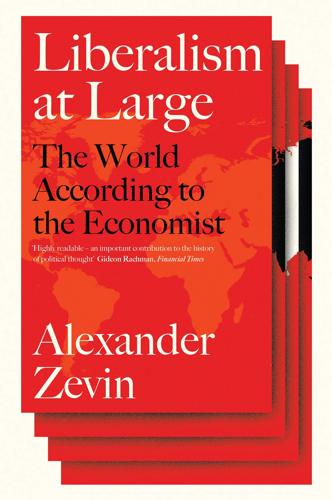
Liberalism at Large: The World According to the Economist
by
Alex Zevin
Published 12 Nov 2019
‘International Finance’, 27 April 1991. 24.Amidst his optimism, he did note criticisms of the ‘productivity miracle’; and that, after a decade of Thatcher, inflation and current-account deficits were rising: ‘Business in Britain’, 20 May 1989. 25.The other contenders in 1993 were Jim Rohwer, Hong Kong chief; Frances Cairncross, environment editor, Daniel Franklin, Britain editor; Johnny Grimond, foreign editor, and David Lipsey, writing for the Britain section. See Jacob Weisberg, ‘The Tweed Jungle’, Vanity Fair, June 1993. 26.Ibid. 27.Bill Emmott, Rivals, London 2008, pp. 123–24. 28.Bill Emmott, ‘The Long Goodbye’, 30 April 2006. 29.
…
‘They should be welcomed with open arms’: ‘A New Approach to Financial Risk’, 17 October 1998. 45.For surveys by Crook see ‘Trial and Error: The Third World’, 23 September 1989; ‘The IMF and the World Bank’, 12 October 1991; ‘Globalisation and Its Critics’, 29 September 2001. Many other editors helped, including Frances Cairncross, who wrote favourably on globalization’s environmental, technological and managerial dimensions. Her reports for the Economist turned into Costing the Earth (1993) and the Death of Distance (1997). 46.Weisberg, ‘Tweed Jungle’, Vanity Fair, June 1993. 47.It mocked protestors for taking their stand in such a successfully globalized city, ‘home to Microsoft and Boeing, birthplace of global crazes “Frasier” and fancy coffee’: ‘Storm over Globalisation’, 27 November 1999. 48.Environmental regulations, left unspecified, might be needed where ‘greater good’ was involved, but determining when would be ‘tough’: ‘The Real Losers’, 11 December 1999.
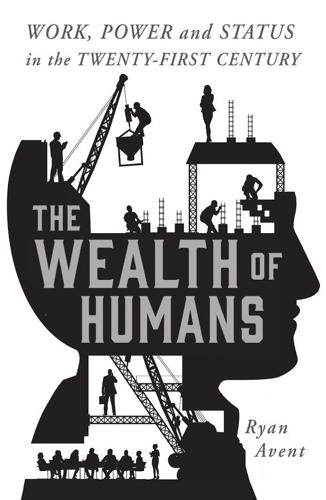
The Wealth of Humans: Work, Power, and Status in the Twenty-First Century
by
Ryan Avent
Published 20 Sep 2016
Such places provide the clearest illustration of the ways in which the digital revolution concentrates economic opportunity on a few, and the challenge facing those interested in achieving a more equitable distribution of that opportunity. Cities are the cosy domains of the rich, and the rich would like to keep it that way. THE LIFE AND DEATH OF DISTANCE That a few cities should find themselves in this position represents something of a surprise. In 1997 a journalist at The Economist, Frances Cairncross, published a book titled The Death of Distance.1 Her book examined the ways in which the digital revolution was shaping and would continue to shape life and business. Though she seemed to be threatening to kill distance, Cairncross in fact foresaw a world in which distance was safe, happy and very much alive.

The Economics of Enough: How to Run the Economy as if the Future Matters
by
Diane Coyle
Published 21 Feb 2011
See also the website http://www.bettertogether.org. 8 Dasgupta (2009c) (paper prepared for presentation at the Annual Bank Conference on Development Economics, Seoul June 2009). 9 Keefer and Knack (1997). 10 For a survey of the empirical findings on social capital, see Bowles and Gintis (2002). 11 Nannicini et al. (2010). 12 Coyle (2007). 13 The original article and others are available on Intel’s website, http://www.intel.com/museum/archives/history_docs/mooreslaw.htm. 14 Nordhaus (2001). 15 David and Wright (2005). 16 Crafts (2004). 17 Coyle (1996). 18 Sheerin (2002). 19 Brynjolofsson and Saunders (2009). 20 Levy and Murnane (2005). 21 OECD and UN World Economic and Social Survey (2005). 22 I can’t possibly do it justice here but good overviews of the issues can be found in Held et al. (1999); Woods (2000); Mattl and Woods (2009); Held, Kaldor, and Quah (2010). 23http://data.worldbank.org. 24 Bobbitt (2002). 25 Hosted by Warwick University, see http://www2.warwick.ac.uk/research/warwickcommission/. 26 Although the 1997 book of the same name by Frances Cairncross did not make simplistic predictions of that kind. 27 These reasons were originally set out in a famous passage by Alfred Marshall (1890) 28 Glaeser (2008), Sassen (2002). 29 Insight into these areas can be found in Davis (2006) and Mehta (2004), in the context of very different cities. See also the classic description of city economies by Jane Jacobs (1961). 30 The term is the one used in official forms such as the census and statistics. 31 See for example Glaeser et al. (1995). 32 Page (2007). 33 Alesina and Glaeser (2006). 34 See also Dorling (2010), who argues that social inequality interacts with beliefs about the nature of society to increase divisions and reduce trust. 35 Frank (2004). 36 Haldane (2009b). 37 Seabright (2010), chap. 1, Coyle (2003). 38 Archibugi (2008), Siebert (2009).

Exponential: How Accelerating Technology Is Leaving Us Behind and What to Do About It
by
Azeem Azhar
Published 6 Sep 2021
Many investors, over the decades, helped me understand the market, including Leila Zenga, Chrys Chrysanthou, Russell Buckley, Liz Broderick, Albert Wenger, Saul Klein, Reshma Sohoni, Hussein Kanji, Sean Park, Ciaran O’Leary, Jason Whitmire, Christian Hernandez, Eileen Tso, Yann Ranchere, Ash Fontana and Jim Pallotta. Several people taught me how to write and think more clearly, including Frances Cairncross, Bill Emmott, Alan Rusbridger, John Micklethwait, John Peet, Nick Passmore, Geoff Carr, Gideon Lichfield, Mark Roberts, Oliver Morton and Ditlev Schwanenflugel. Further thanks to the many teachers who helped me understand the world of computing, politics and economics, including John Wilcox, Stephen Bishop, Nick Lord, Ray Bradley, Mike Clugston, Don Markwell, Vijay Joshi, the late John Lucas, the late David Bostock and the late Jack Schofield.

Geek Heresy: Rescuing Social Change From the Cult of Technology
by
Kentaro Toyama
Published 25 May 2015
Option B leads to the misguided belief that more connectivity brings everyone closer together. As one utopian put it, “People will communicate more freely and . . . the effect will be to increase understanding, foster tolerance, and ultimately promote worldwide peace.”17 This may sound horribly naïve, but the author, Frances Cairncross, is hardly an intellectual lightweight. She has been a journalist for The Guardian and The Economist and has held top posts at Britain’s Economic and Social Research Council as well as the British Science Association. It’s easy to see that more communication tools don’t lead to better relationships or mutual understanding where neither previously existed.
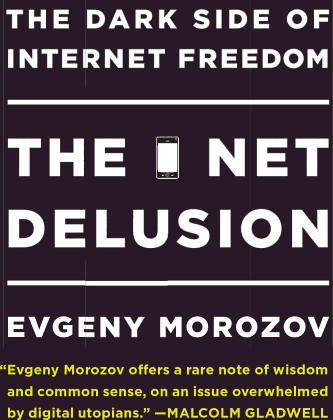
The Net Delusion: The Dark Side of Internet Freedom
by
Evgeny Morozov
Published 16 Nov 2010
When it comes to Twitter, from which the government cannot really withdraw a license, Chavez’s choice is not between censorship and free speech but between staying out of the Twitter space altogether—and thus, risking losing control of online conversations—and trying to infuse such conversations with his own ideology. This is not how it was supposed to be. Many early predictions about the Internet posited that it would rid the world of government propaganda. Frances Cairncross in her 1997 best seller, The Death of Distance, a defining text in the cyber-utopian canon, predicted that “free to explore different points of view, on the Internet or on the thousands of television and radio channels that will eventually be available, people will become less susceptible to propaganda from politicians.”

Wealth and Poverty: A New Edition for the Twenty-First Century
by
George Gilder
Published 30 Apr 1981
Oaxaca, “Male-Female Wage Differentials in Urban Labor Markets,” Working Paper No. 23 (Princeton, NJ: Industrial Relations Section, Princeton University, 1971). Chapter Fourteen 1 Patrick Buchanan, quoted in Harper’s, vol. 259, no. 1554 (November 1979), p. 39. 2 David B. Wilson, “There’s a New Class in Our Society,” Boston Globe, July 16, 1979, p. 11. 3 Frances Cairncross, “‘Deindustrialization’—Odd Phenomenon,” Financier , vol. 2, no. 4 (April 1978), pp. 11–14. See also Walter Eltis and David Bacon, The British Problem: Too Few Producers, rev. American edition (New York: St. Martin’s Press, 1978). 4 Computed from OECD National Accounts Statistics, 1972 and OECD Revenue Statistics, 1965–1972, as tabulated by Alan T.

Your Computer Is on Fire
by
Thomas S. Mullaney
,
Benjamin Peters
,
Mar Hicks
and
Kavita Philip
Published 9 Mar 2021
Thomas Misa (Hoboken, NJ: John Wiley, 2010), 115–141; Mar Hicks, Programmed Inequality: How Britain Discarded Women Technologists and Lost Its Edge in Computing (Cambridge, MA: MIT Press, 2016). 39. Nathan Ensmenger, The Computer Boys Take Over: Computers, Programmers, and the Politics of Technical Expertise (Cambridge, MA: MIT Press, 2010). 40. Frances Cairncross, The Death of Distance: How the Communications Revolution Is Changing Our Lives (Boston: Harvard Business Review Press, 2001); Thomas L. Friedman, The World Is Flat: A Brief History of the Twenty-First Century (New York: Farrar, Straus and Giroux, 2006); Ray Kurzweil, The Singularity Is Near: When Humans Transcend Biology (New York: Viking, 2016); John Mark Newman, “The Myth of Free,” George Washington Law Review 86, no. 2 (October 2016), 513–586. 41.

Order Without Design: How Markets Shape Cities
by
Alain Bertaud
Published 9 Nov 2018
While the teleportation machine from Star Trek is likely to remain fiction, would communication technology—in particular, increasingly realistic teleconferencing—make location obsolete, providing a substitute for frictionless mobility? Or, in simpler terms, could communication technology replace the face-to-face contacts that generate most of our commuting trips? Indeed, it is much cheaper to move data than to move people. This is precisely the main argument developed by Frances Cairncross in her book The Death of Distance (2001). Cairncross suggests that the Internet and the global spread of wireless technology are increasingly making distance irrelevant. Communication technology would make face-to-face contact obsolete, and, in this sense, we would be getting closer to a Star Trek–like frictionless mobility, replacing the mobility of individuals by that of data.

The House of Morgan: An American Banking Dynasty and the Rise of Modern Finance
by
Ron Chernow
Published 1 Jan 1990
Friends in High Places: The Bechtel Story. New York and London: Simon & Schuster, 1988. Macmillan, Harold. War Diaries: Politics and War in the Mediterranean. London: Macmillan, 1984. McNeil, William C. American Money and the Weimar Republic. New York: Columbia University Press, 1986. McRae, Hamish, and Frances Cairncross. Capital City: London as a Financial Centre. 1973. Reprint. London: Methuen, 1985. Madrick, Jeff. Taking America: How We Got from the First Hostile Takeovers to Megamergers, Corporate Raiding and Scandal. Toronto, New York, and London: Bantam Books, 1987. Makin, John H. The Global Debt Crisis.